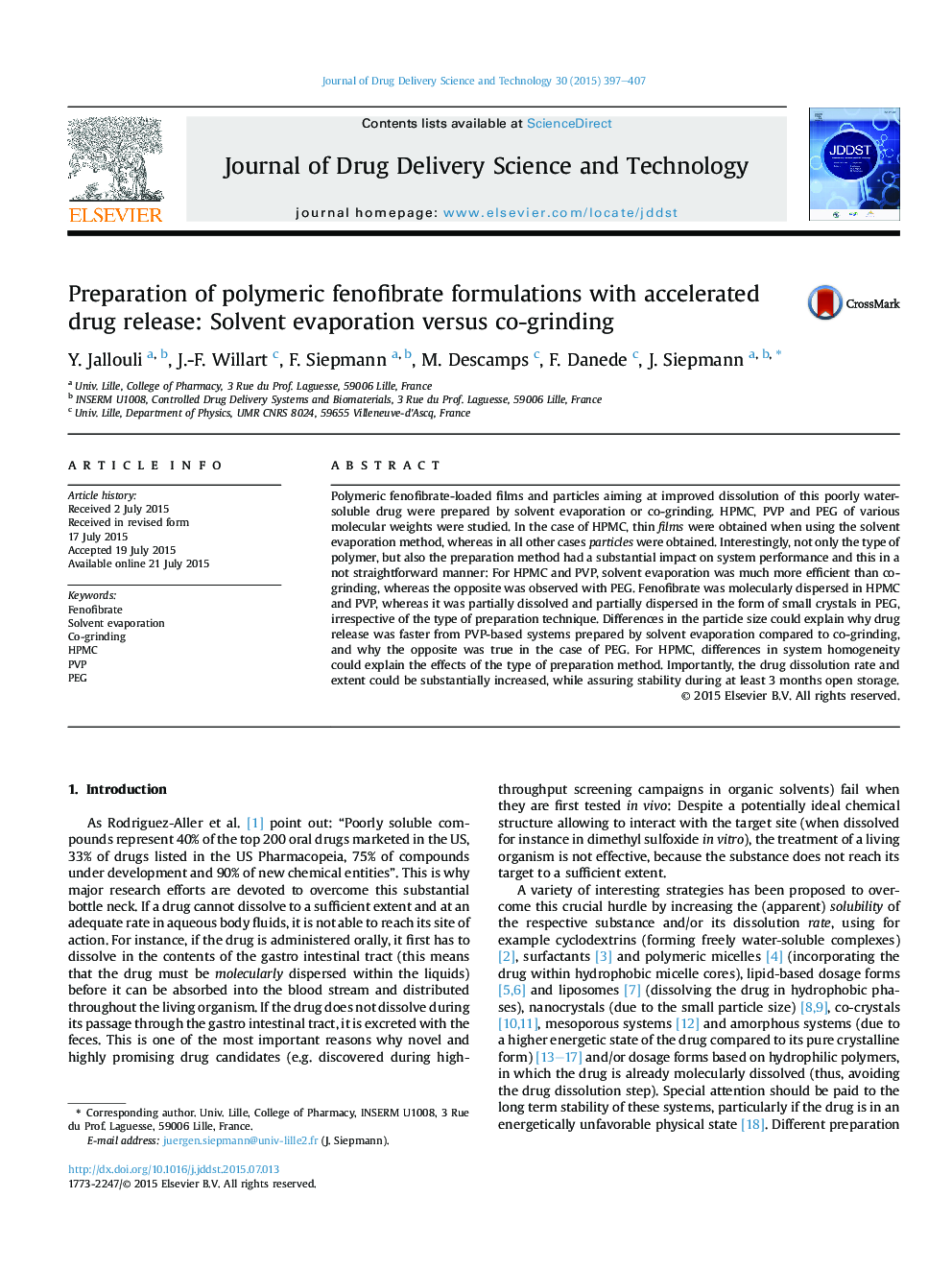| Article ID | Journal | Published Year | Pages | File Type |
|---|---|---|---|---|
| 2483113 | Journal of Drug Delivery Science and Technology | 2015 | 11 Pages |
Polymeric fenofibrate-loaded films and particles aiming at improved dissolution of this poorly water-soluble drug were prepared by solvent evaporation or co-grinding. HPMC, PVP and PEG of various molecular weights were studied. In the case of HPMC, thin films were obtained when using the solvent evaporation method, whereas in all other cases particles were obtained. Interestingly, not only the type of polymer, but also the preparation method had a substantial impact on system performance and this in a not straightforward manner: For HPMC and PVP, solvent evaporation was much more efficient than co-grinding, whereas the opposite was observed with PEG. Fenofibrate was molecularly dispersed in HPMC and PVP, whereas it was partially dissolved and partially dispersed in the form of small crystals in PEG, irrespective of the type of preparation technique. Differences in the particle size could explain why drug release was faster from PVP-based systems prepared by solvent evaporation compared to co-grinding, and why the opposite was true in the case of PEG. For HPMC, differences in system homogeneity could explain the effects of the type of preparation method. Importantly, the drug dissolution rate and extent could be substantially increased, while assuring stability during at least 3 months open storage.
Graphical abstractFigure optionsDownload full-size imageDownload as PowerPoint slide
